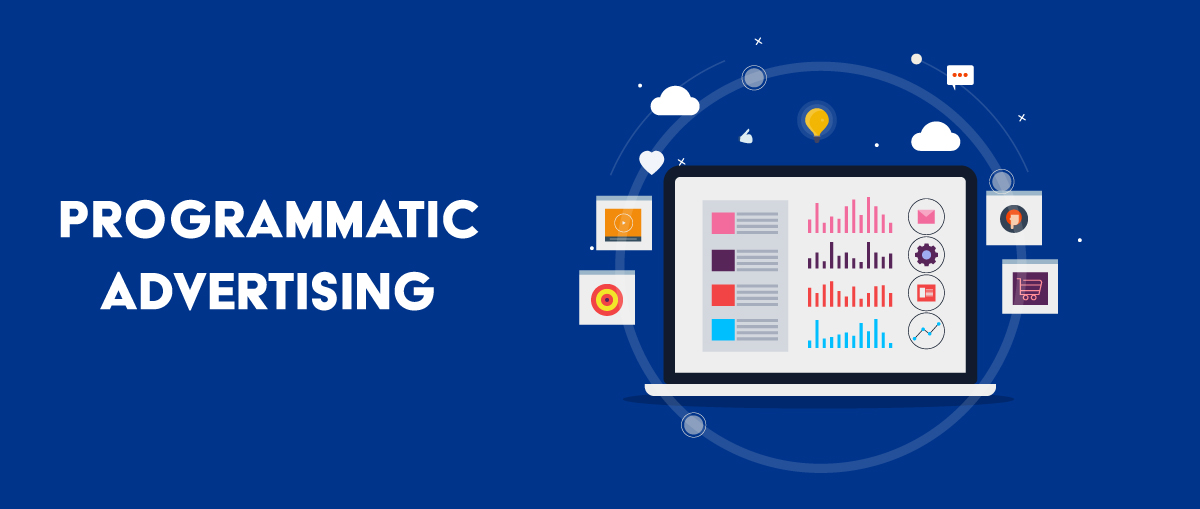What Is a DSP (Demand Side Platform)?
A DSP is a technology platform that allows advertisers and agencies to buy digital ad inventory across multiple websites automatically. Instead of negotiating deals with individual publishers, advertisers use DSPs to manage bids, target audiences, and optimize campaigns in real-time.
Advertisers use DSPs to automate the buying process across multiple channels, such as websites, mobile apps, and video platforms. DSPs offer real-time bidding (RTB) capabilities, enabling advertisers to bid on impressions as they become available, ensuring campaigns are cost-effective and highly targeted. Through a DSP, advertisers can apply advanced targeting options, such as geographic location, device type, browsing behavior, and demographic information.
Additionally, DSPs provide analytics and optimization features, allowing advertisers to adjust their campaigns based on performance metrics like click-through rates (CTR) and conversions. Many DSPs also integrate with Data Management Platforms (DMPs) to enhance audience segmentation and targeting capabilities further. By centralizing media buying activities, DSPs help advertisers manage large-scale campaigns with greater precision and less manual effort.
Popular DSP examples include The Trade Desk, Google Display & Video 360, and Amazon DSP. Choosing the right DSP depends on factors such as targeting capabilities, inventory access, transparency in reporting, and ease of integration with other marketing technologies.
Understanding SSPs (Supply Side Platforms)
An SSP is the publisher’s counterpart to a DSP. It helps website owners, app developers, and other digital media sellers manage, sell, and optimize their available ad space (inventory). SSPs connect to multiple ad exchanges and DSPs, maximizing revenue for publishers through real-time auctions.
SSPs are responsible for setting minimum prices (also called floor prices), managing direct and programmatic deals, and optimizing yield through intelligent algorithms. They help publishers balance the needs of multiple buyers, ensuring the highest-paying and most relevant ads are displayed to site visitors. Header bidding, a technique often facilitated by SSPs, enables publishers to offer inventory to multiple demand sources at once, improving transparency and revenue outcomes.
Moreover, modern SSPs often integrate with Data Management Platforms (DMPs) to deliver audience-based selling, allowing publishers to sell inventory not just based on placement but also on the quality of the audience segment.
Examples of popular SSPs include Magnite, PubMatic, Xandr, and OpenX. Choosing the right SSP depends on the publisher’s needs for control over inventory, access to high-quality demand, transparency, and support for advanced monetization strategies like private marketplaces and preferred deals.
The Role of DMPs (Data Management Platforms)
A DMP collects, organizes, and activates large sets of audience data from various sources (like CRM systems, websites, mobile apps, etc.). Advertisers and publishers use DMPs to create detailed customer profiles and enhance targeting for ad campaigns.
A Data Management Platform (DMP) is a system that collects, organizes, and activates large volumes of structured and unstructured data from various sources. DMPs aggregate first-party data (collected directly from customers), second-party data (partnered data sources), and third-party data (external sources) to create detailed audience profiles. These profiles allow advertisers and publishers to better understand and target their audiences with precision.
For advertisers, a DMP helps in segmenting audiences based on behaviors, demographics, interests, and purchase intent, making ad targeting much more effective. For publishers, DMPs provide a way to package audiences and sell more valuable inventory based on user profiles rather than just placement or context.
DMPs are commonly used in tandem with DSPs and SSPs to enable better decision-making for media buying and selling. They also help in campaign optimization by feeding performance data back into the targeting model, continuously refining audience segments.
Leading DMP providers include Lotame, Salesforce Audience Studio, and Oracle BlueKai. When selecting a DMP, important considerations include the platform’s ability to integrate with other marketing technologies, its data privacy compliance standards, and the breadth and depth of its data sources.
How These Components Work Together
In the programmatic ecosystem, DSPs, SSPs, and DMPs function like different gears in a well-oiled machine, all working together to enable the buying and selling of digital advertising space at scale and in real time.
- Advertisers use a DSP to buy ad impressions that target specific audiences.
- Publishers use an SSP to sell their inventory to the highest bidder.
- DMPs supply valuable audience data to both DSPs and SSPs, refining targeting and making campaigns more effective.
- Ad Exchanges sit in the middle, facilitating the real-time buying and selling process through auctions.
Here’s how it typically works: A user visits a website. The publisher’s SSP sends out a request for bids to various DSPs through an ad exchange. The DSPs evaluate the bid request using data provided by a DMP, which includes information about the user’s profile — such as age, interests, or browsing history. Based on this information, each DSP automatically decides whether to bid for that impression and how much to bid.
The highest bidder wins, and their ad is instantly shown to the user — all of this happening in milliseconds. The DMP’s role throughout this process is critical, providing the audience insights that make smarter bidding decisions possible.
By coordinating across these platforms, advertisers ensure that their ads reach the right people at the right time, and publishers maximize their revenue potential by getting the best price for their inventory. This interconnectedness forms the backbone of modern digital advertising, ensuring efficiency, scalability, and precision.
Ad Exchanges and Real-Time Auctions
Ad Exchanges are digital marketplaces where ad inventory is bought and sold through real-time auctions. They act as the middle ground between the supply side (publishers using SSPs) and the demand side (advertisers using DSPs). Instead of direct deals, most transactions on ad exchanges happen programmatically via real-time bidding (RTB).
When a user loads a webpage, the SSP sends an impression opportunity to an ad exchange. DSPs connected to the exchange evaluate the opportunity based on their advertisers’ targeting criteria and submit bids. The ad exchange then determines the winner — usually the highest bidder — and serves the winning ad almost instantly.
Real-time auctions happen in mere fractions of a second and are crucial for making digital advertising more efficient and targeted. Not all inventory on ad exchanges is sold via open auctions; private marketplaces (PMPs) and programmatic direct deals are also common. These methods provide more control and premium placement options for both buyers and sellers.
An Ad Exchange is a digital marketplace where DSPs and SSPs interact. When a user visits a website, an auction happens in milliseconds. Advertisers bid on the impression via DSPs, and the highest bidder’s ad gets shown — all automatically and in real-time.
Major ad exchanges include Google Ad Exchange (AdX), Xandr, and Index Exchange. Choosing the right exchange can impact your ability to access high-quality inventory and ensure competitive pricing in your programmatic campaigns.
Key Players in the Programmatic Space
The programmatic advertising ecosystem is vast, with many specialized players offering different pieces of the puzzle.
On the DSP side, major players include The Trade Desk, Google Display & Video 360, Amazon DSP, and MediaMath. These platforms enable advertisers to access inventory across millions of websites and optimize their ad spend efficiently.
For SSPs, leading companies are Magnite, PubMatic, Xandr, and OpenX, which focus on helping publishers sell their inventory while maximizing their revenue through competition and yield optimization.
When it comes to DMPs, well-known providers include Lotame, Salesforce Audience Studio, and Oracle BlueKai. These platforms specialize in gathering, analyzing, and activating customer data to improve targeting and campaign effectiveness.
Ad exchanges like Google AdX, Xandr, and Index Exchange serve as the real-time marketplaces connecting buyers and sellers.
There are also full-stack solutions (e.g., Google, Amazon, Verizon Media) offering bundled DSP, SSP, and DMP services, creating streamlined ecosystems. Choosing the right partners depends heavily on your campaign goals, budget, target audience, and need for transparency and control.
- DSPs: The Trade Desk, Google DV360, MediaMath
- SSPs: Magnite, PubMatic, OpenX
- DMPs: Lotame, Salesforce, Oracle
- Ad Exchanges: Google AdX, Xandr, Index Exchange
Choosing the Right Stack for Your Business
Choosing the right programmatic advertising stack is a strategic decision that can significantly affect your marketing performance. Select the right mix of DSPs, SSPs, and DMPs depends on your goals:
Advertisers need a DSP that offers strong targeting, transparency, and reporting. If you’re an advertiser, prioritize a DSP that offers strong targeting capabilities, transparency in bidding, detailed reporting, and easy integration with DMPs for data-driven campaigns. Look for features like custom audience creation, cross-device targeting, and fraud prevention tools.
Publishers need an SSP that maximizes yield and supports header bidding. If you’re a publisher, you need an SSP that offers robust yield management, access to premium buyers, support for header bidding, and advanced reporting features. Evaluate whether the SSP provides flexibility in setting pricing floors and managing different deal types like private marketplaces.
Both may benefit from a DMP if personalization and audience insights are a priority.
Some large players (like Google, Amazon) offer bundled solutions that include DSP, SSP, and DMP functionalities together.
A DMP becomes essential if you want to enhance your targeting strategies based on customer data. Ensure the DMP complies with data privacy regulations like GDPR and CCPA and integrates easily with your DSP and SSP partners.
For many businesses, choosing an integrated solution — a full-stack platform that combines DSP, SSP, and DMP functions — can simplify management and improve performance. However, this may come at the cost of reduced transparency.
Ultimately, define your objectives first: brand awareness, direct response, lead generation, or revenue maximization — and build your stack around those goals.

